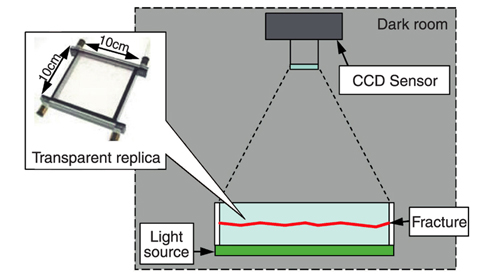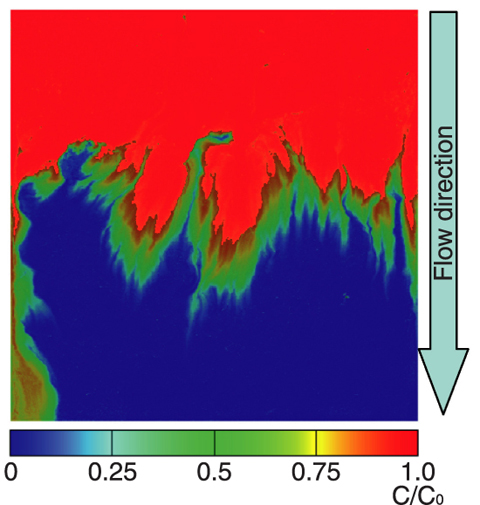
Fig.2-5 Concept of optical measurement of a fracture

Fig.2-6 Example of fracture aperture measurement

Fig.2-7 Example of measured dye tracer concentration
Safety assessment of radioactive waste disposal is mainly based on scenarios in which moving groundwater provides pathways for radionuclide migration from a waste repository to the surface environment. To evaluate groundwater flow and nuclide migration, an appropriate model capable of describing the characteristics of the host rock should be used. In the case of hard rock with low porosity such as granite, fractures and/or faults carry nearly all of the groundwater flow. A single fracture is usually approximated by a parallel plate fracture model. Natural fractures, however, exhibit in-plane heterogeneity in terms of its variable aperture, and furthermore a huge number of heterogeneously distributed fractures constitute a network of water flow paths. A model with multiple parallel plate fractures is often used to represent the fracture network to evaluate the heterogeneous flow paths in rock mass. In such a fracture model, one of the key issues to be solved is the method for defining the representative values of hydraulic and transport properties of the parallel plate model used for modeling natural fractures with its in-plane heterogeneity.
We have, therefore, developed a laboratory experiment system that can measure quantitatively both the fracture aperture distribution and the groundwater flow within a fracture, under the same conditions (Fig.2-5). The system consists of a transparent replica of a single fracture and a transmitted-light optical measurement system. The fracture replica is made by duplicating a fracture that has been artificially generated in 10cm scale of rock block with transparent resin. The optical measurement system consists of a light source of constant intensity and a high resolution and sensitivity CCD (Charge Coupled Device) sensor to measure the transmitted light intensity through the transparent replica perpendicular to its plane. The light intensity is attenuated depending on the light absorbance of the dye, the dye concentration, and thickness of the gap filled with dye. When the transmitted light attenuation is measured after the fracture replica is filled with a constant-concentration dye tracer, the quantitative degree of fracture aperture at each point can be obtained (Fig.2-6). After getting the aperture distribution, the dye can be replaced with water, the dye tracer flowing in from one side. Thus, it is possible to use the optical system for visualizing dye tracer migration and also for measuring dye concentration distribution and time dependent concentration change at every point, quantitatively (Fig.2-7).
The experimentally obtained high spatial resolution quantitative data for both aperture distribution and tracer migration in the fracture plane is valuable to validate results of previous studies by numerical simulations of virtual fractures. The data obtained in this study have been published. In the future, we shall continue our experiments to get additional data on fractures with various patterns of in-plane heterogeneity, to understand flow and transport in a fracture, and determine the representative flow and transport parameters for these fractures.